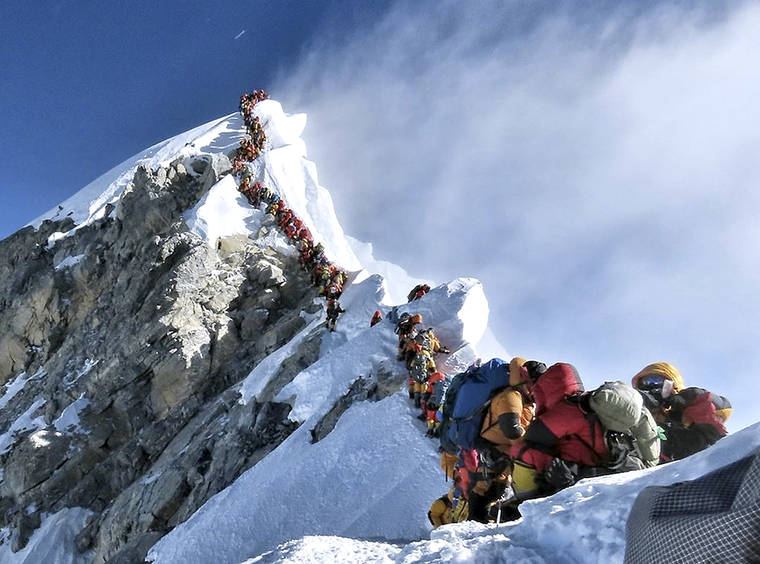NAMCHE, Nepal — Scaling Mount Everest was a dream few realized before Nepal opened its side of the mountain to commercial climbing a half-century ago. This year the government issued a record number of permits, leading to traffic jams on the world’s highest peak that likely contributed to the greatest death toll in four years.
As the allure of Everest grows, so have the crowds, with inexperienced climbers faltering on the narrow passageway to the peak and causing deadly delays, veteran climbers said.
After 11 people died this year, Nepal tourism officials have no intention of restricting the number of permits issued, instead encouraging even more tourists and climbers to come “for both pleasure and fame,” said Mohan Krishna Sapkota, secretary at the Ministry of Tourism and Civil Aviation.
Nepal, one of the world’s poorest countries, relies on the climbing industry to bring in $300 million each year. It doesn’t cap the number of permits it issues or control the pace or timing of the expeditions, leaving that to tour operators and guides who take advantage of brief clear weather conditions whenever they come, leading to pileups near the peak.
On May 22, a climber snapped a photo from a line with dozens of hikers in colorful winter gear that snaked into the sky.
Climbers were crammed crampon-to-crampon along a sharp-edged ridge above South Col, with a 7,000-foot drop on either side, all clipped onto a single line of rope, trudging toward the top of the world and risking death as each minute ticked by.
“There were more people on Everest than there should be,” said Kul Bahadur Gurung, general secretary of the Nepal Mountaineering Association, an umbrella group of all expedition operators in Nepal. “We lack the rules and regulations that say how many people can actually go up and when.”
The death toll this season is the highest since 2015.
Most of those who died are believed to have suffered from altitude sickness, which is caused by low amounts of oxygen at high elevation and can cause headaches, vomiting, shortness of breath and mental confusion.
Once only accessible to well-heeled elite mountaineers, Nepal’s booming climbing market has driven down the cost of an expedition, opening Everest up to hobbyists and adventure-seekers. Nepal requires climbers to have a doctors’ note deeming them physically fit, but not to prove their stamina at such extreme heights.






